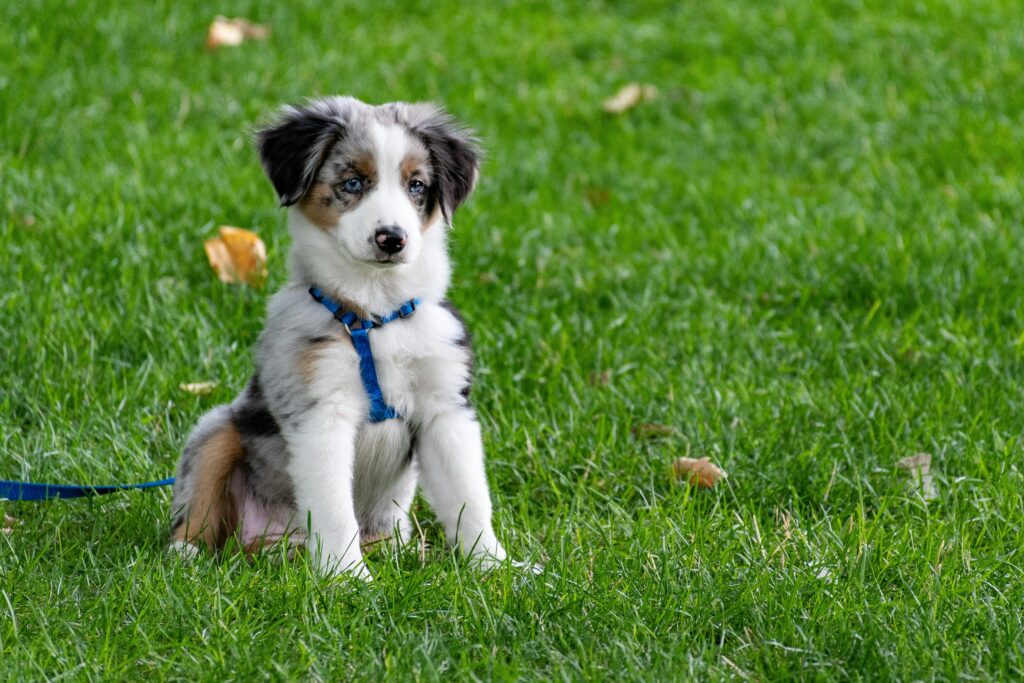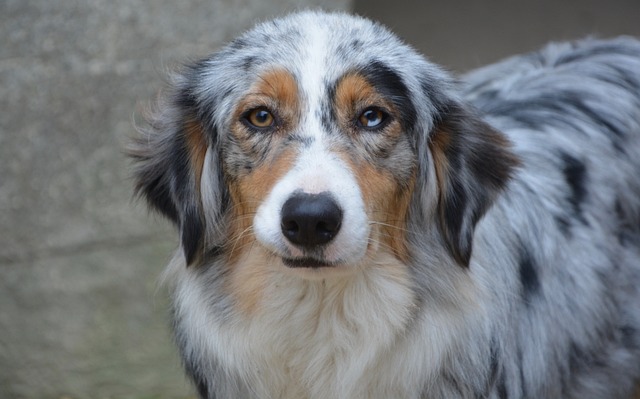Australian Shepherds function as energetic people-oriented herding dogs that maintain their outward agility with their high intelligence. The “Aussie” designation represents this notable working breed that becomes popular because of its extensive work capacity alongside remarkable coloring and steadfast loyalty to relatives. Australian Shepherds maintain their vitality because these dogs need meaningful teamwork together with physical activities.
The complete manual for living with Australian Shepherds presents full information about their historical roots and personality traits and provides extensive training instructions coupled with grooming instructions and dietary requirements.
Table of Contents
- Introduction to Australian Shepherds
- History and Origin
- Physical Characteristics
- Personality and Temperament
- Training an Australian Shepherd
- Exercise and Activity Needs
- Nutritional Requirements and Diet
- Grooming and Hygiene
- Common Health Issues and Preventive Care
- Socialization and Behavior
- Living Conditions and Adaptability
- Fun Activities and Games
- Conclusion
1. Introduction to Australian Shepherds
The Australian Shepherd dog displays several traits including outstanding intelligence combined with endless vitality and deep working abilities. The originally livestock-herding breed now participates in extensive activities including therapy work, agility competitions, search-and-rescue missions and serves as an active member of families.
They bear the name of Australian Shepherds but these dogs emerged from American soil rather than Australian territory.
2. History and Origin
Where Did Australian Shepherds Come From?
Australian Shepherds emerged in the United States before a single specimen reached the Australian continent.The original region of development for Australian Shepherds was in the western United States instead of Australia. During the 19th century ranchers from western America created the breed to act as herding animals for sheep and cattle.
Ancestral Roots:
The breed most likely developed through the combination of European herding breeds including Border Collie and Pyrenean Sheepdog.
Basque shepherds led these dogs through Australia until they reached America, so they received their name.
Fun Fact:
The rodeo circuit provided Australians with nationwide fame because they performed their herding demonstrations and tricks to audiences in stadium arenas.
3. Physical Characteristics

Size and Build
- Height: 18–23 inches
- Weight: 40–65 pounds
- Build: Medium-sized, athletic, and agile
Coat and Colors
Aussies have a medium-length double coat that may be straight or slightly wavy.
Common Coat Colors:
- Blue Merle
- Red Merle
- Black
- Red (Liver)
- With or without white and tan markings
Their striking eye colors can be blue, brown, amber—or even one of each (heterochromia)!
4. Personality and Temperament
What Are Australian Shepherds Like?
Australian Shepherds maintain their elite status because they boast exceptional intelligence and wholehearted connection with humans alongside their strong commitment to work. The connection between Australian Shepherds and their adoptive families becomes strong because active homes tend to suit them best.
Key Traits:
- Loyal & Protective
- Highly Intelligent
- Energetic & Playful
- Alert & Observant
Are Australian Shepherds Good Family Dogs?
They thrive as family members when their families participate in outdoor activities and establish regular mental engagement and framework.
Are Australian Shepherds Good Guard Dogs?
Not only do they provide alert notification about strangers but they naturally protect their family members thus making them suitable watchdogs. The dog notices unknown people without getting aggressive but informs you about outsiders by greeting them loudly.
5. Training an Australian Shepherd
Training Needs
The intelligence level of Australian Shepherds accepts a combination of various activities and ongoing mental-stimulating education for effective training success.
Basic Training Tips:
- Start early during puppyhood.
- Use positive reinforcement methods.
- Include short, engaging sessions to prevent boredom.
- Introduce advanced commands—they love a challenge!
Socialization Matters
You should introduce your Australian Shepherd to different places as well as people and dogs and various sounds when they are still young.
6. Exercise and Activity Needs
Energy Levels
The Australian Shepherd holds a place among dogs with the most energetic temperament attributes. A lack of daily exercise causes Australian Shepherds to display pointless activities and engage in risky behavior therefore they need daily physical action.
Daily Exercise Needs:
- 1.5 to 2.5 hours per day
- Running, hiking, fetch, agility training, and herding games
- Mental stimulation through food puzzles or advanced training routines
Warning:
Understimulated Aussies may develop obsessive behaviors, such as chasing shadows or excessive barking.
7. Nutritional Requirements and Diet
Feeding for Energy and Health
Australian Shepherds require a diet containing proteins as the leading element to achieve their maximum athletic potential.
Ideal Foods:
- Lean proteins: chicken, beef, fish, turkey
- Whole grains and sweet potatoes
- Omega-3-rich oils (flaxseed, fish oil) for coat health
- Leafy greens and fiber-rich vegetables
Feeding Schedule:
- Puppies: 3–4 small meals a day
- Adults: 2 main meals daily
Avoid overfeeding—Aussies can gain weight quickly if under-exercised.
8. Grooming and Hygiene
Grooming an Australian Shepherd
Aussies receive minimal care requirements although owners must frequently groom their coats for health maintenance and to avoid matting.
Grooming Routine:
- Brushing: 2–3 times per week
- Bathing: Every 6–8 weeks (more if active outdoors)
- Ear Cleaning: Weekly, especially for floppy-eared Aussies
- Nail Trimming: Every 2–3 weeks
- Dental Care: Brush teeth 2–3 times per week
Seasonal Shedding:
They shed heavily twice a year—spring and fall.
9. Common Health Issues and Preventive Care
Health Overview
Dog breeds with Australian Shepherds have inherited medical potential risks together with their few specific breed illnesses.
Common Health Concerns:
- Hip Dysplasia
- Elbow Dysplasia
- Collie Eye Anomaly (CEA)
- Progressive Retinal Atrophy (PRA)
- Epilepsy
- Multidrug Sensitivity (MDR1 gene mutation)
Preventive Care:
- Annual vet checkups
- DNA testing for hereditary issues
- Joint supplements as they age
- Proper dental care
- Up-to-date vaccinations and parasite control
10. Socialization and Behavior
Raising a Well-Behaved Aussie
Aussie youths need ongoing social interaction for their growth process. Aussies tend to observe cautiously toward unfamiliar people but acquire comfort levels by slowly getting acquainted with new environments.
Behavioral Tendencies:
The powerful genetic direction to herd animally produces bites to human heels during movement and triggers child chasing patterns.
Constructive barking is one way this breed warns its owners yet owners should limit its repetitive sounds.
When attachment forms between individuals it produces intimate relationships that cause the development of separation anxiety.
Curbing Unwanted Behavior:
- Keep their minds and bodies busy
- Avoid long hours alone
- Reward calm, non-reactive behavior
11. Living Conditions and Adaptability
Are Aussies Good for Apartment Living?
The Australian Shepherd breed does not adapt well to living in condo structures. These dogs will change their habits to fit any dwelling but thrive best in homes with access to ventilated open spaces for physical activity.
Ideal Living Conditions:
The living environment for Australian Shepherds needs ample urban or rural space as well as sheltered outdoor areas.
Households engage themselves weekly in two main outdoor lifestyle activities that consist of hiking along with running and playing outside..
What makes cooler outdoor conditions suitable for Australian Shepherds is their layer of coat that acts as insulation.
Not Recommended For:
- Sedentary owners
- Homes with long unattended hours
- Hot, humid climates without access to shade and water
12. Fun Activities and Games
The Australian Shepherd breed thrives when involved in sportive interactive recreational games. The Australian Shepherd reaches peak life potential whenever its owner completes needed tasks.
Great Activities for Aussies:
- Agility courses
- Herding trials
- Frisbee and flyball
- Search and scent games
- Advanced obedience challenges
- Puzzle toys and food games
Pro Tip:
Shifting toys every week maintains both their intellectual stimulation and engage their minds.
13. Conclusion
Apart from its brilliant brain capabilities and attractive physique the Australian Shepherd demands steady participation from its owners through its entire lifespan. Such dog breeds demand constant mental stimulation along with active lifestyle routines and authentic bonds starting from puppyhood until senior dog maturity. People who welcome Aussie dogs get two essential personality traits which present themselves as dedicated devotion next to energetic habits and adaptive qualities.
Key Takeaways:
According to their high intelligence and energy level Australian Shepherds require structured routines throughout their daily lives
Their ideal environment includes times for training along with times for play given their behavioral requirements.
Such dogs need equal levels of mental activity alongside physical exercise
Australian Shepherd dogs demand comparable mental exercise while they require routine physical exercise too.
Australian Shepherds find success when they receive attention in addition to meaningful activities alongside their partner.
Appropriate owner treatment produces a loyal companion dog which brings extensive happiness to household families.




